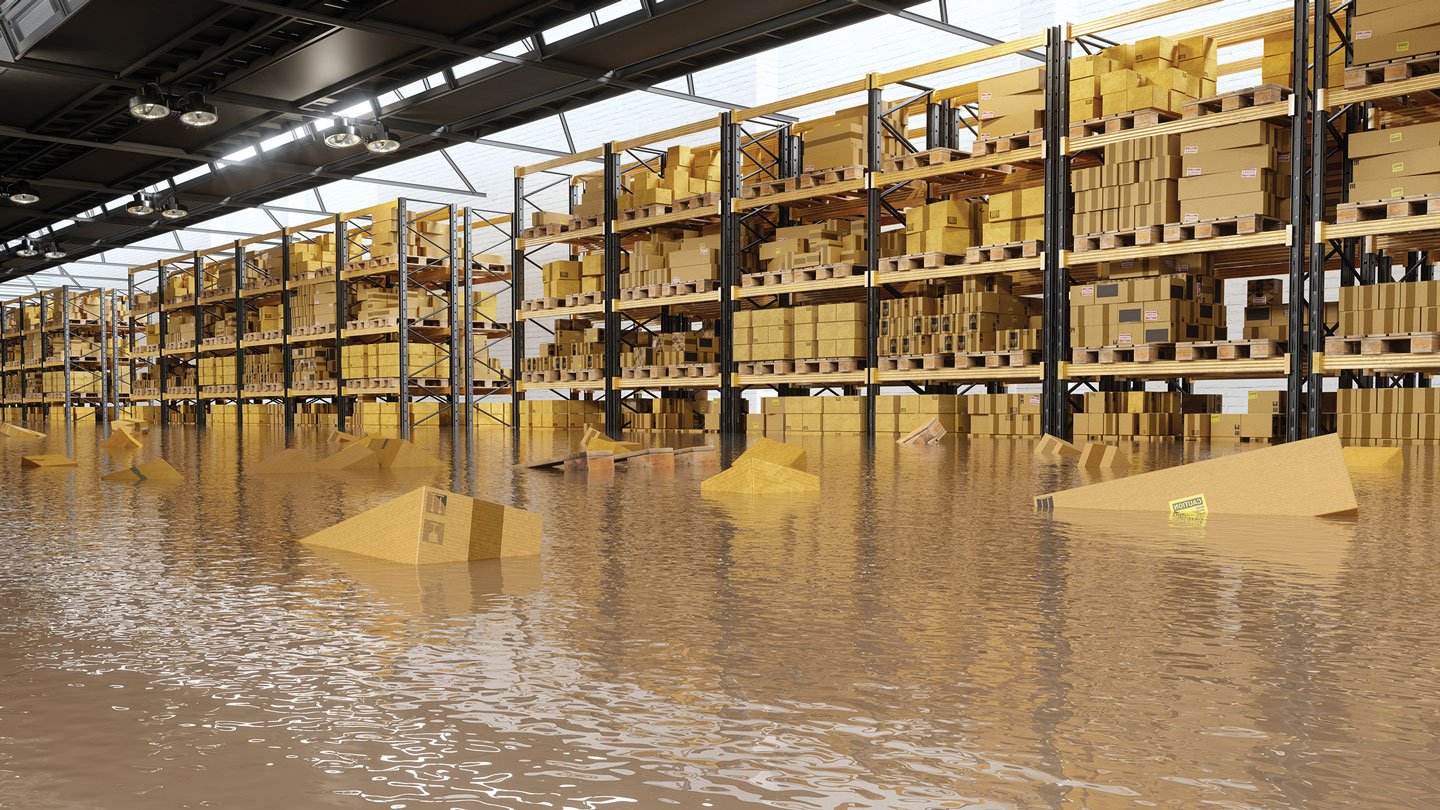
Extreme Weather: Key Tactics for Future-proofing CRE Development
Developers can minimize future climate risks by incorporating resilient building strategies that position their properties for economic success.
Twenty-eight. That’s the number of billion-dollar extreme weather-related disasters that impacted the United States from coast to coast in 2023, according to the National Oceanic and Atmospheric Administration (NOAA). When compared with the 18 weather disasters experienced in 2022, the general consensus is that the frequency of these events will continue to increase. The extreme weather events encompassed everything from droughts and wildfires to tornados, floods and hurricanes — all happening more frequently and with higher economic impacts than ever before.
Last year’s extreme weather impacts are a sobering reminder of the climate risks being faced in greater numbers — and how a changing climate will alter where and how society builds in the future. Understanding and mitigating these risks is a critical priority for commercial real estate professionals.
Buildings located in regions affected by weather disasters are facing the exorbitant costs associated with repairing damaged buildings and infrastructure. NOAA’s National Centers for Environmental Information reported that damages from weather- and climate-related disasters in the U.S. totaled nearly $93 billion in 2023.
Surveying the Expected Damage
Identifying and understanding potential risks is an important first step in preparing a strategy to hedge against climate change impacts. Having a plan in place will position portfolios for resilience and reduce financial harm. The impact of climate risks on development and construction can include any combination of the following:
Prolonged construction schedules and costs: Increased storm frequency and intensity can flood construction sites and damage projects that are in progress. These impacts can lead to reduced workdays, poor site conditions and the need to rebuild damaged components of the project — all of which extend construction schedules and increase costs.
Higher insurance requirements: Applying to both the construction and operational phases of an asset, insurance companies are raising premiums for insurance and reinsurance to account for mounting risks related to climate (Moody’s found CRE properties have seen about a 7.6% annual growth rate since 2017). In recent years, these companies have resorted to pulling out of high-risk geographies, contributing to less competition in some markets. They are also seeking to decarbonize their portfolios, leaving some sectors with reduced access to insurance if their internal carbon footprints don’t align with those of insurance providers.
Physical and operational risks to assets: Flooding, high winds and wildfires threaten direct physical damage to existing assets. These risks and other climate change impacts such as droughts and chronic water stress can also reduce the reliability of water and power supplies, which may disrupt business operations and employee housing, resulting in decreased productivity.
Decreased long-term asset value: Assets located in high-risk areas that are prone to hurricanes, rising sea levels, wildfires and coastal flooding are expected to lose value over time. This is due to higher insurance costs, higher property taxes and lower demand as threats increase and local governments raise taxes to fund necessary adaptation projects. According to a 2022 McKinsey article, a study of a diversified equity portfolio found that “absent mitigating actions, climate risks could reduce annual returns toward the end of the decade by as much as 40 percent.”
Required retrofits: Properties designed and constructed without consideration for low-carbon operations will be subject in the future to energy-efficiency retrofits, electrification and clean energy implementation. These requirements may require substantial building modifications that are factored in during the sale of the asset.
Protecting Portfolios From Risk
Companies that own, build, buy, improve or invest in real estate should be seeking partners from the commercial real estate development and construction sector that understand these risks and possess the capabilities to deliver more sustainable and resilient buildings.
A well-designed approach not only identifies and mitigates risks but also identifies opportunities to create financial business value. Key considerations for various stages of a building’s life cycle include the following:
Development: When developers are engaged in the early stages of site selection, they should be integrating climate risk assessments into their decision-making processes. These risk assessments should inform climate mitigation actions to be incorporated into the final site design. The pro forma should consider a return-on-investment model that includes both financial and risk management value. This will strengthen the business case for recommending sustainable design and engineering elements that will improve the asset’s resilience.
Developers with short asset hold times and asset managers in acquisition phases should evaluate potential threats to future market value due to poor building sustainability performance, substantial retrofit efforts and higher insurance premiums due to the reduced availability of insurance.
Design and construction: In assessing future climate risk, it’s critical to devise a design plan that is environmentally sound for the long term, with the intent of increasing the physical and operational resilience of the asset. Design strategies can include exceeding local building code requirements for wind loading, water and energy efficiency, on-site renewable energy and irrigation, as well as acute tactics such as raising finished floor elevations and locating critical equipment on higher floors.
Construction safety plans, schedules and insurance coverage should also factor into site-specific climate risks. The safety and well-being of workers should be top of mind in the face of how extreme weather probability may affect construction processes. A few strategies to improve site safety include monitoring ambient and body temperature to ensure workers are not becoming overheated; providing hydration stations and breaks to prevent dehydration in high heat; and offering shaded work areas and shifting work hours to avoid prolonged periods of sun exposure.
In the case of insurance, engage in a top-to-bottom evaluation of every climate-related element that could affect premiums, such as increased worker compensation claims and schedule delays if weather-related disasters affect the site.
Real estate management: Existing asset portfolios should be evaluated for their current and future exposure to climate risks. For large corporations that own or operate a significant number of buildings, the assessment process could begin with a comprehensive review of their real estate portfolio to optimize the alignment between owned assets and business needs. This assessment will likely pinpoint assets that can be divested, thereby improving the long-term health and resilience of a portfolio.
Contingency plans: Having an air-tight contingency plan for existing assets offers another safeguard against extreme weather events. These plans should address occupant health and safety, business continuity and how to address physical climate risks to the asset, which can be factored into capital plans. The breadth of the contingency plan should be weighed against potential losses — the higher the degree of risk, the more robust a contingent supply should be.
By future-proofing portfolios through adapting buildings to withstand the unavoidable consequences of climate change, the real estate sector will position itself for continued growth and prosperity. Even in the eye of the storm, being prepared with an umbrella can help avoid getting drenched.
Joe Rozza, P.E., BCEE, is the chief sustainability officer at Ryan Companies.
Reducing CRE’s Environmental ImpactAs CRE professionals consider ways to lessen the industry’s impact on climate change, the following tools may be helpful: World Resources Institute Aqueduct data platform: Evaluates water-related risks in different locations or an entire portfolio through the year 2080 (wri.org/aqueduct/tools). Moody’s Climate On Demand: Provides rated exposure to a wide range of physical climate risks (climate.moodys.com/climate-on-demand). U.S. Department of Energy Better Buildings Efficiency-Resilience Nexus: Resources to minimize vulnerabilities to climate-related impacts through resilience planning (betterbuildingssolutioncenter.energy.gov/resilience). |
Screening for RiskRyan Companies has begun screening potential projects for physical climate risks. It implements several tools for screening, including Moody’s Physical Climate Risk Scorecard, which provides rated exposure to a wide range of physical climate risks and more. These screenings consider floods, heat stress, hurricanes, sea-level rise, water stress, wildfires and earthquakes. During one project in Minnesota, Ryan’s team screened a location during the pursuit phase and highlighted elevated flooding and wildfire risks as well as the potential for heat stress risks in the near term. This resulted in extra care for workers during construction, construction schedule considerations and upgrades to the building design. Discovering this information before the request for proposal was finalized allowed the contractor and client to make the necessary accommodations for success. |




